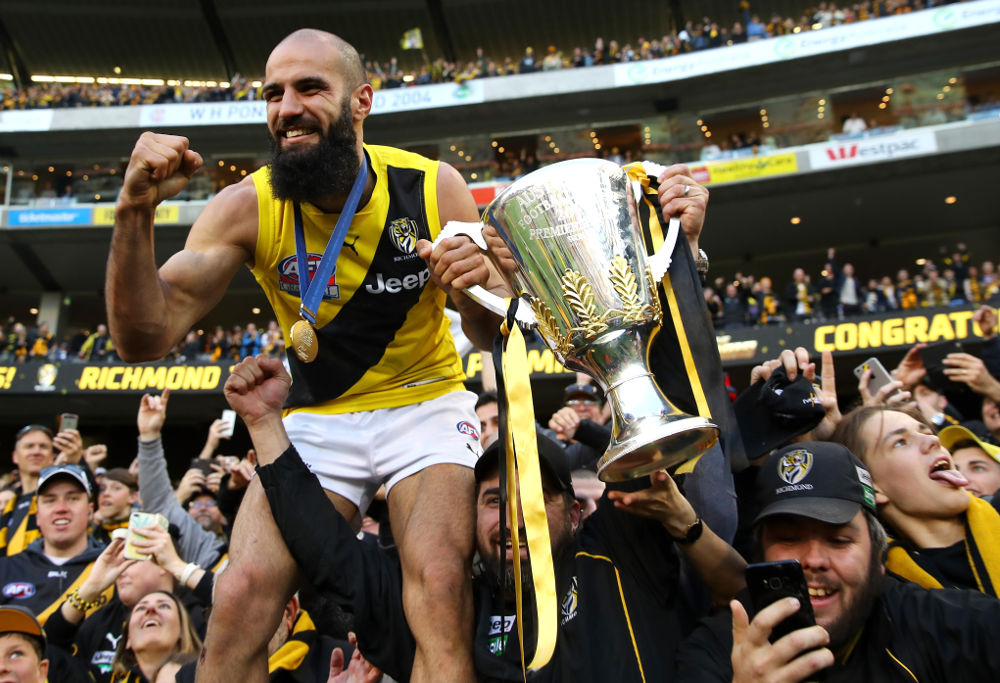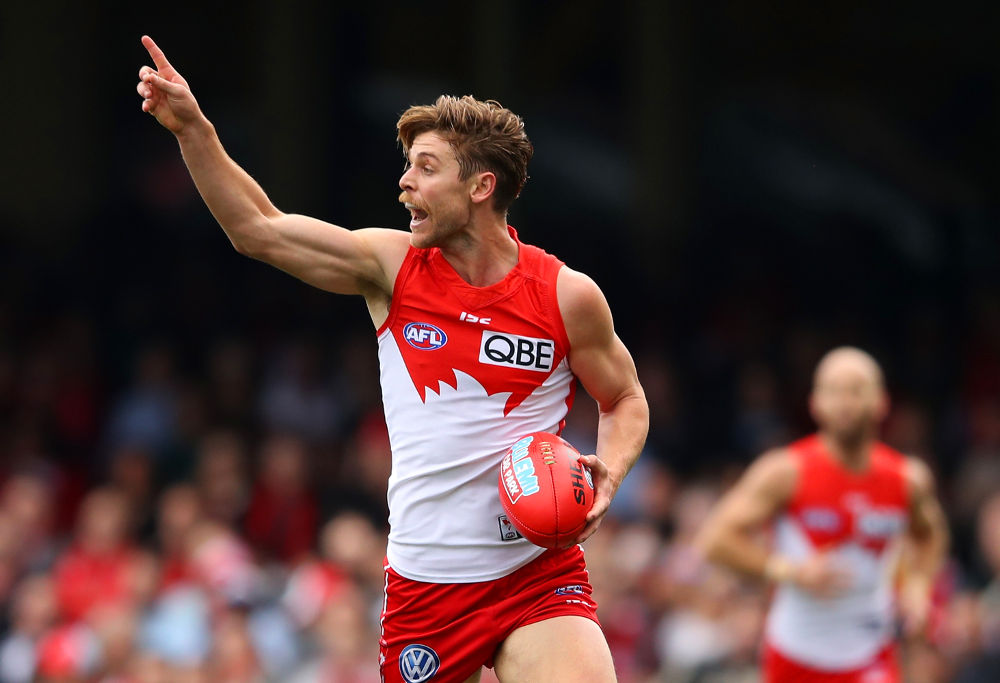The crucial cogs of AFL's Round 7: Which players need to be the difference makers?
We’re taking a look at one player from each team that needs to make a difference this week, starting with the ANZAC Day games.

Now that the trading period and draft is over we can start to get a feel for what the 2018 rosters will look like for each of the 18 AFL teams hoping to play through to the end of September this coming year.
If you’ve read my work here before, you’ll remember that I’m a maths geek and like to spend my free time crunching numbers looking for trends and predicting future performance.
My track record using my ‘ELO following football’ rating system for teams and players has proven to be more accurate than the odds-makers and the vast majority of pundits out there – not by much, mind you, but by more than a trivial amount!
Trying to project what each club will have to work with next year will give us a head start on projecting what they’ll accomplish in te league in autumn and winter. There are two numbers to share with you in pursuit of this goal.
One is the ‘following football’ rating from last September, the year-end result of the on-field production using the ELO method, a zero-sum calculation where you compare expectation to result and add to the rating of the team which outperformed expectation the same amount you subtract from the rating of their opponent.
As we do every season, we normalise those numbers towards the mean to address the normal tendencies during the season to spread apart. In the AFL we find that a 20 per cent reduction figure is about right.

(Cameron Spencer/AFL Media/Getty Images)
The other is new to readers of The Roar. We’ve taken the top 29 players on each team’s projected roster – nine forwards, nine midfielders, nine backs and two ruckmen – and assigned them a point value based on their projected points for the coming season using the previous three seasons where applicable.
We’ve been very conservative with changes. If they were, say, the 100th rated player overall last season, then, barring injury, trade, moving positions or other mitigating factors, they’re probably valued as about that right now. Young players will probably improve a bit, old players will probably fade a bit. You get the idea.
Incidentally, this would be easy for you to do with fantasy values, although those values aren’t quite as functional for this purpose as the ELO numbers are, because they’re designed for a slightly different purpose. I won’t swear they’re not as good; I’ve just found that this seems to work better.
Why 29 players when they only field 22? Because by the time they reach the bye most teams have used about that many bodies on the field. If they’re fortunate, they won’t have to dig any deeper – if they’re GWS last year, they’ll be hip-deep in unused guernseys.
Beyond those top 29 it becomes tougher to forecast who will come out of the feeder league bushes and show improvement enough to be given a shot.
So there are those numbers, written by team with (total roster projected points, current team rating)”

(Daniel Kalisz/Getty Images)
Some things stand out, and while it may belabour the obvious in some cases, we’ll point them out anyway.
Teams that seem to have stronger rosters than their record or rating would tell us what from last year? The most prominent teams are Melbourne, fourth on the roster point list but didn’t make finals last year, and Fremantle, who were free-falling to the bottom at the end of the year. Their roster number indicates a .500 season or so, resting 11th overall and just ahead of co-tenants West Coast. Brisbane’s off the bottom of the table as well, but that shouldn’t be a surprise to anyone watching this young team last season.
Which teams are surprisingly thin on talent? The names in 15th and 16th are notable: St Kilda is at the bottom end of the middle pack on 2408 – the average here turns out to be right around 2700, for comparison – but the Doggies look to be in trouble this year, having only the same amount of talent as the three teams deemed to have the ‘least talented roster’ by these numbers. The Roos and the Blues, with Dew’s Crews right there too.
Are the Bulldogs really that strapped for meritorious players? Well with Marcus Bontempelli not having pulled into that highest echelon (yet) as many expected, the culling of a few veteran players and some weaknesses disguised by a joy-filled run to the flag in 2016 that 2017 exposed, the answer is yes.
Here’s the list of the five highest value players on the Bulldogs list according to our numbers in alphabetical order: Bontempelli, Luke Dahlhaus, Lachie Hunter, Jason Johannisen, and Jackson Macrae. They’re all good players, but how does that stack up against almost any random AFL team? You do the comparison.
To fill to the 29th player we have to include back-and-forth players like Josh Dunkley, Josh Schache, Lukas Webb and rookie draft pick Aaron Naughton, who may be wonderful but isn’t likely to be their number one option this early. While most teams have this kind of issue at the bottom – otherwise why are those players not starting? – it speaks to the fact that the Bulldogs’ roster doesn’t have the kind of strength at either end that strikes fear in the hearts of other teams.

(AAP Image/Julian Smith)
It was also surprising to see our two highest rated teams, Sydney and Richmond, in sixth and seventh in terms of overall roster strength. Neither team should be overly concerned about that unless there’s a tidal wave of injuries that overwhelms either of them this season.
Doing a quick simulation that combines the current team ratings for Round 1 and the roster’s projected team point numbers affecting each team’s rating gradually up to the bye, Sydney is still one of three teams projected to reach Round 15 at 12-1 – the others are Adelaide and Geelong – and Richmond should be somewhere near 10-3 at that point as well.
Those projections assume form holds in every game, but one-third of the time it doesn’t in the AFL. We used to include that in our forecasts but discovered it’s fruitless to be guessing when fate will blow on the dice!
Those projections, by the way, don’t reveal anything interesting that the two numbers above don’t already show. Adelaide has a great roster number and a great rating, so guess what? They’re likely to win most of their games! Gold Coast has just the opposite. Guess what? It’s hard to find wins for them on this schedule, although I have faith that Stewart Dew can pull them up at least a little bit.
Which brings us to our most important intangible: coaching. What effect will Dew have on the Suns? Will an invigorated Nathan Buckley show more flair with the Magpies? In general what effect does a year have on anything related to a team?

(Cameron Spencer/Getty Images)
I’m convinced that the biggest difference with Richmond in 2017, especially late in the season, was not Dion Prestia or any other new person involved, but rather just the year of growth and experience and settling in together of the major players for the Tigers – a year of maturation for Dustin Martin into the prohibitive favourite and winner of the Brownlow, the coordination of the forward line and the back line both with time and experience together, and so forth. I’ll lay odds they didn’t realise what they had until they started to win some games they didn’t expect to win!
So all of this number crunching is much ado about nothing?
Not really. It gives us an idea what we’re supposed to be looking for this season – who might have sudden surges from their farm system mid-season. It might tell us who’s working with duct tape and bailing wire to hold the team together until they can bring some youth into the fight down the road.
In Brisbane’s case and perhaps in Adelaide’s as well it confirms what we’ve been thinking about their growth as up-and-coming teams. And, frankly, it’s just fun to play with. Why else would we invest so much time in fantasy football and tipping contests when there’s no serious merit to either? Because we like it! It gives us some tangible way to be involved in footy, even when it’s a full level removed from the real thing.
In a sense, this is our cosplay. If we have Paddy Dangerfield on our fantasy team, we can watch the game from his perspective, living and figuratively dying with his every possession. If we’ve clicked the box next to Collingwood’s name, we become invested in their performance that week in a way that we wouldn’t have been before. Even without money riding on the outcome, our pride alone will keep us attached.
So take it seriously, but no more seriously than you take the game itself. And in the end, footy is just a game.